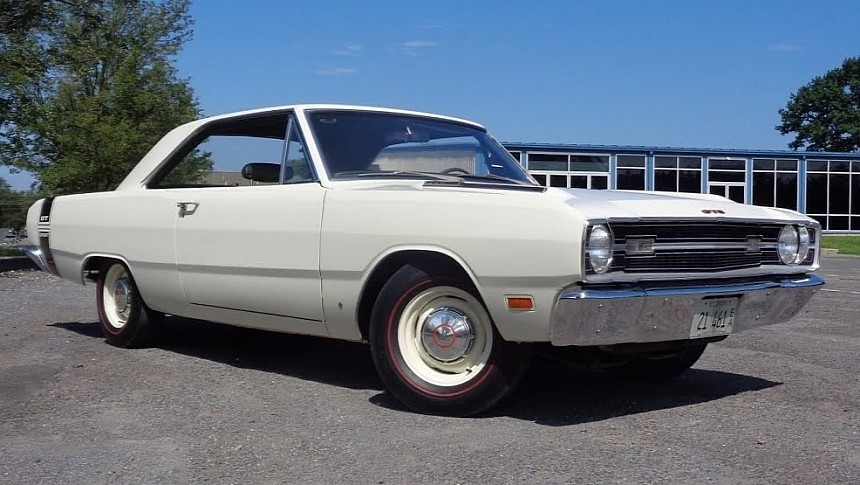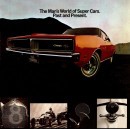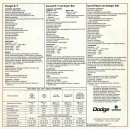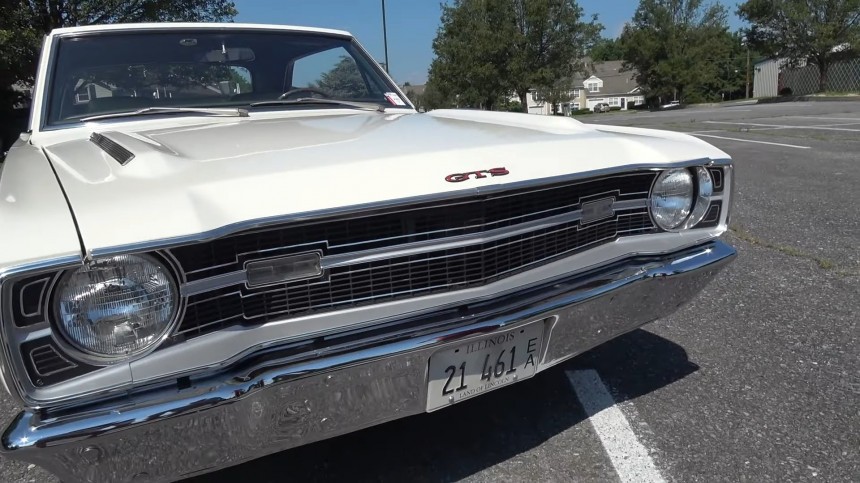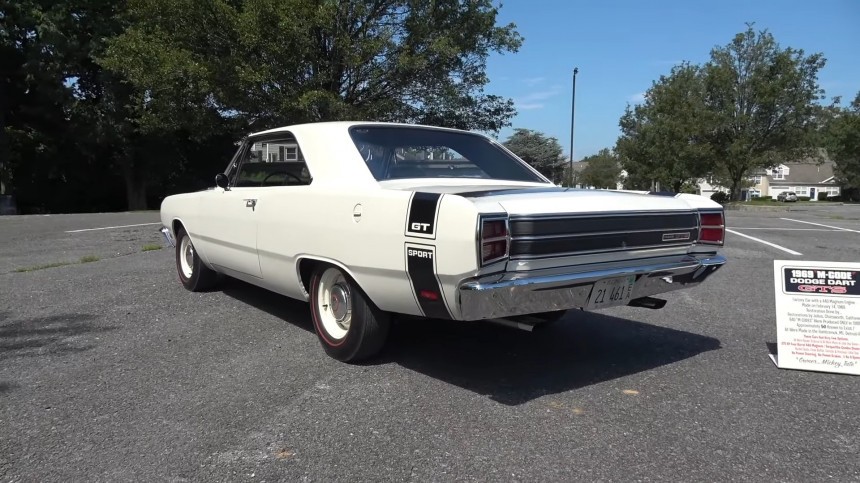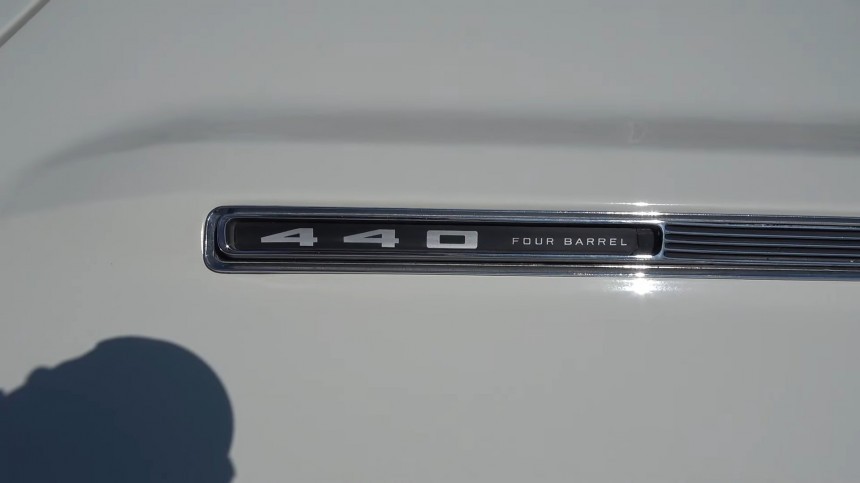It really all started in 1967 when the Dodge Dart underwent some serious cosmetic surgery, and one dealer from Illinois decided looks alone can’t make up for lack of performance. The solution was transplanting a 383 cubic-inch (6.3-liter) V8 in the compact A-body car. The happy wrench-turners did it again in 1968, but this time they went all in and asked the factory to plant a 440 Magnum in the same engine bay space.
That was a Grand accomplishment – or, historically accurately, a Grand Spaulding achievement since it was the ideation of the legendary Grand Spaulding Dodge dealership in Chicago, Illinois. Chrysler noted it, as it had done the previous year when “Mr. Norm” Kraus taught them the high-performance lesson.
That small ‘68 Dodge Dart fitted with the biggest of Ma Mopar’s powerhouse V8s became known as the GSS (Grand Spaulding Special), and only 48 were made – all for Mr. Norm. However, Chrysler saw the opportunity and snatched it. In 1969, the M-code Dodge Dart GTSport was born (M was the fender tag letter indicating the 440-cube/ 7.2-liter big-block).
Not too many were built – 640, and only around 60 are documented to exist today – and they came in the same basic configuration: gigantic motor, three-speed TorqueFlite A727 automatic transmission, manual drum brakes, manual steering, no A/C. There simply was no room left under the hood to fit the driver’s aids.
One of the most underrated sleepers of all time, the Dodge Dart GTSport (no space between the GT and Sport) equipped with the titanic 440-CID was allegedly a 12-second-or-better car at the drag strip. It was also not fun to drive on the street, as most – but not all – owners agree on this aspect.
Most Dart GTS drivers describe the feel as “tough” when using the car on a public road – mainly because the vehicle has an uncontrollable tendency to go broadside under panic braking. Even passengers get scared of it, particularly at high speeds.
Take Mrs. Tate as an excellent example of this GTS phobia – see the attached video for details. The wife of Mickey Tate – the owner of the white Dodge Dart GTSport with a factory 440 V8 in it – the lovely lady openly admits she is a little scared when her husband slams the go-fast pedal.
For a good reason: the smallest member of the original Scat Pack (the Charger, the Coronet, and the Dart, in descending order on the fame ladder) was an actual pocket rocket when aimed at the far end of a 1,320-foot strip of tarmac. Chrysler engineers claimed 130-mph trap speeds (some 209 kph) over the standing quarter, usually achieved in low 12s.
There was no four-speed GTS 440 in 1969. Incidentally, the big-block offer was only available in ’69, but there’s a catch: the Dodge sales brochures didn’t advertise this engine option. See the gallery: the standard 340-cube motor / 5.6-liter was accompanied by the 383-CID/6.3-liter alternative. If you wanted the 7.2-liter Magnum, you had to place a special order.
The cars are very real, although also scarce today, especially in this good of a (restored) condition. Granted, the engine block on this individual was replaced at some point during previous ownership, and not much else is known about the car’s history. But when one searches for his dream car for so many years, and when the car happens to be as rare as polar bears at the South Pole, there’s no space for being picky.
One could say they’re an acquired taste – the majority would disregard the high-performance Dart from the “daily driver” list of choices (on “horrible driver experience” grounds). Others advocate that the only significant difference between the 440 and its 383 four-speed manual little brother is that the front floor pan and automatic transmission tunnel would get very warm to hot. That’s uncomfortable, especially in a car where the only climate-controlling facilities are the window crank and a good set of fast-acting, weather-changing prayers.
Sure, detractors could say that this car is the literal embodiment of the prejudice the rest of Planet Piston has about American-made automobiles: all they can do is go fast in a straight line. (Also, NASCAR puts considerable effort into strengthening this image).
Granted, the A-bodies were designed for small engines – mainly the economical slant-sixes or the small-block V8s that didn’t put much weight on the front end but delivered the bulk of the sales effort. Then again, what would the combustion world be without an “old man’s car” with “440 Four Barrel” call-outs on the hood vents?
The big-block under the single carburetor was good for 375 hp (380 PS) and a tire-sublimating 480 lb-ft of torque (651 Nm). This last figure was part of why Chrysler didn’t put the four-speed manual in the 440 Darts in ’69 – the automatic was deemed the only tranny capable of handling the torque without pulverizing the differential. (Remember, no Danas were made for the Dart). With that much power in a 3,400-lbs (1,542 kg) car, even HEMI ogres were a rear-view mirror site for a Dart Magnum.
Also, the manual linkage would have taken up precious real estate in the already crammed engine bay – for space-saving purposes; the exhaust manifolds were carried over from the 383 motors. But the 3.55:1 rear was a good compromise between dragstrip performance and decent roadability.
Among the very few options that could be ordered and installed on these super-rare 1969 Darts, the AM radio and the tachometer are both missing from this example. But that deep throaty burble more than makes up for the lack of audio entertainment, and the tach is as good as a toothache when the automatic does all the work.
Mickey Tate has a very up close and personal experience with the 440 Magnum Dart GTS – his first car was a ’69 yellow-and-black example. His mother bought that car for him in August 1972, when he was just 15 (yes, fifteen! and illegally driving it). Nostalgically, this car from today and his former one from 51 years ago came off the assembly line on the same date: February 14, 1969 (their VINs are only two digits apart).
That small ‘68 Dodge Dart fitted with the biggest of Ma Mopar’s powerhouse V8s became known as the GSS (Grand Spaulding Special), and only 48 were made – all for Mr. Norm. However, Chrysler saw the opportunity and snatched it. In 1969, the M-code Dodge Dart GTSport was born (M was the fender tag letter indicating the 440-cube/ 7.2-liter big-block).
Not too many were built – 640, and only around 60 are documented to exist today – and they came in the same basic configuration: gigantic motor, three-speed TorqueFlite A727 automatic transmission, manual drum brakes, manual steering, no A/C. There simply was no room left under the hood to fit the driver’s aids.
Most Dart GTS drivers describe the feel as “tough” when using the car on a public road – mainly because the vehicle has an uncontrollable tendency to go broadside under panic braking. Even passengers get scared of it, particularly at high speeds.
Take Mrs. Tate as an excellent example of this GTS phobia – see the attached video for details. The wife of Mickey Tate – the owner of the white Dodge Dart GTSport with a factory 440 V8 in it – the lovely lady openly admits she is a little scared when her husband slams the go-fast pedal.
There was no four-speed GTS 440 in 1969. Incidentally, the big-block offer was only available in ’69, but there’s a catch: the Dodge sales brochures didn’t advertise this engine option. See the gallery: the standard 340-cube motor / 5.6-liter was accompanied by the 383-CID/6.3-liter alternative. If you wanted the 7.2-liter Magnum, you had to place a special order.
The cars are very real, although also scarce today, especially in this good of a (restored) condition. Granted, the engine block on this individual was replaced at some point during previous ownership, and not much else is known about the car’s history. But when one searches for his dream car for so many years, and when the car happens to be as rare as polar bears at the South Pole, there’s no space for being picky.
Sure, detractors could say that this car is the literal embodiment of the prejudice the rest of Planet Piston has about American-made automobiles: all they can do is go fast in a straight line. (Also, NASCAR puts considerable effort into strengthening this image).
Granted, the A-bodies were designed for small engines – mainly the economical slant-sixes or the small-block V8s that didn’t put much weight on the front end but delivered the bulk of the sales effort. Then again, what would the combustion world be without an “old man’s car” with “440 Four Barrel” call-outs on the hood vents?
Also, the manual linkage would have taken up precious real estate in the already crammed engine bay – for space-saving purposes; the exhaust manifolds were carried over from the 383 motors. But the 3.55:1 rear was a good compromise between dragstrip performance and decent roadability.
Among the very few options that could be ordered and installed on these super-rare 1969 Darts, the AM radio and the tachometer are both missing from this example. But that deep throaty burble more than makes up for the lack of audio entertainment, and the tach is as good as a toothache when the automatic does all the work.
Mickey Tate has a very up close and personal experience with the 440 Magnum Dart GTS – his first car was a ’69 yellow-and-black example. His mother bought that car for him in August 1972, when he was just 15 (yes, fifteen! and illegally driving it). Nostalgically, this car from today and his former one from 51 years ago came off the assembly line on the same date: February 14, 1969 (their VINs are only two digits apart).
